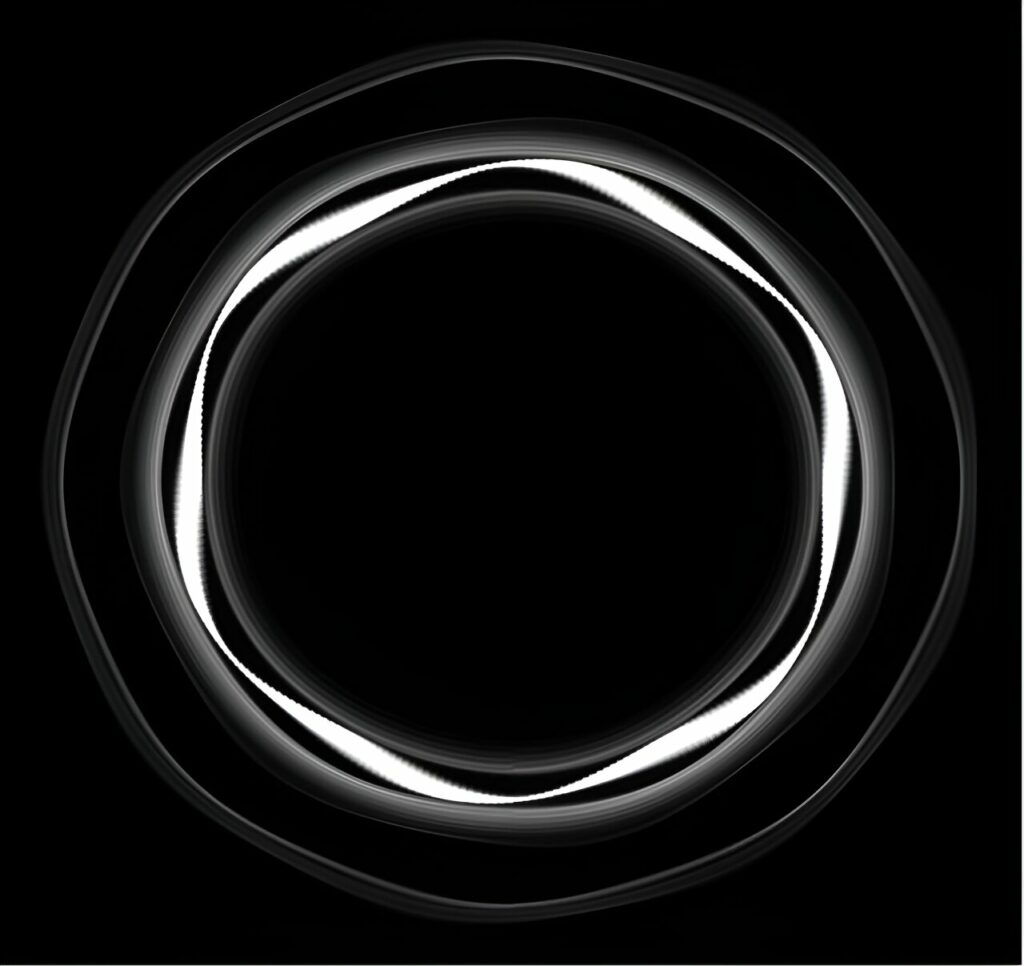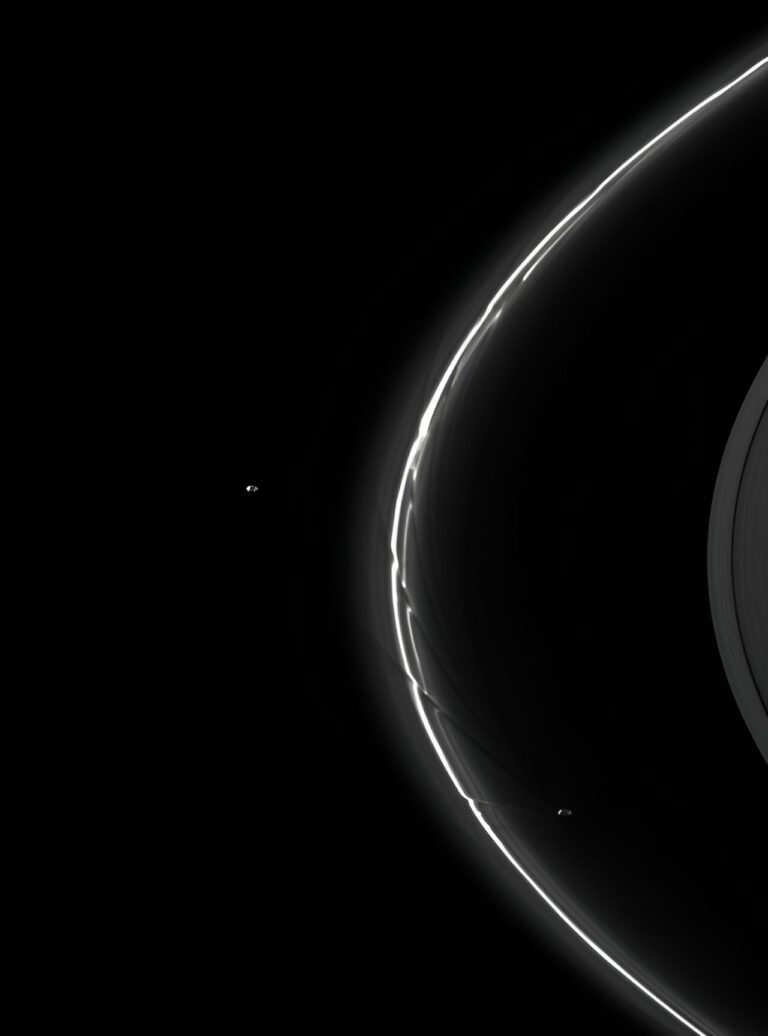Compact Satellite Could Influence Centaur Rings
The Centaur Chariklo is surrounded by two distinct thin rings, which may have been formed by a satellite even smaller in size. Chariklo belongs to a group of minor planets known as Centaurs, which are similar in size to asteroids but have a composition more akin to comets. These Centaurs orbit the sun in the outer regions of the solar system, primarily between the orbits of Jupiter and Neptune.
According to Amanda Sickafoose, a Senior Scientist at the Planetary Science Institute and the lead author of a study titled “Numerical Simulations of (10199) Chariklo’s Rings with a Resonant Perturber” published in The Planetary Science Journal, the discovery of rings around minor planets is relatively recent, and only a few such systems have been identified so far. While extensive research has been conducted on the magnificent rings surrounding the gas giants, the formation and evolution of rings around smaller celestial bodies remain poorly understood.
Sickafoose explains that their research suggests one possible explanation for the existence of thin rings around small bodies is the influence of a small satellite, which sculpts and shapes the rings. The study presents the first N-body simulations of a ring system around a small celestial object that includes a satellite. N-body simulations involve the use of computer software to model the physical dynamics of a system consisting of multiple components. These simulations provide valuable insights into the dynamic evolution of the modeled system.

In this particular instance, it has been demonstrated through the modeling of numerous ring particles within a system resembling Chariklo that a solitary moon, measuring kilometers in size, can sustain two rings possessing similar properties to those observed.
According to Sickafoose, it is believed that the ring particles primarily consist of water ice, akin to those found at the giant planets. However, the precise characteristics of these particles, such as their hardness or softness when they collide, as well as their particle-size distribution, remain unknown. Further simulations can aid in determining and limiting these properties.
Over time, planetary rings naturally disperse or spread out. Chariklo, for instance, displays two narrow rings, each spanning a few kilometers in width. In order for these rings to maintain their thinness, there must be a mechanism in place to confine the material and prevent it from dispersing, as explained by Sickafoose.
The paper actually demonstrates this phenomenon by simulating a ring system resembling Chariklo, but without a satellite. It is observed that the width of the rings progressively increases with time in this scenario. This is in contrast to situations where a satellite is in resonance with the ring material, as it acts to confine the rings to the observed kilometer-sized widths.
Chariklo, with a diameter of approximately 250 kilometers, is the first Centaur to be discovered with rings, and these rings are indeed confined.
Our research demonstrates that the presence of Chariklo-like rings can be influenced by a small satellite, which has an estimated radius of approximately 3 kilometers and a mass of 1013 kilograms. Due to its relatively small size, this satellite falls below the limits of our current direct-imaging capabilities. Therefore, alternative methods such as indirect observations or a dedicated spacecraft mission would be necessary to detect and study it.
Another proposed explanation suggests that Chariklo possesses a gravitational anomaly on its surface, and the rings are in resonance with the rotational motion of its nucleus. Specifically, for every three rotations completed by Chariklo, the rings complete one orbit. The physical forces acting upon the ring particles are comparable in both scenarios, whether it involves a satellite or a spin-orbit resonance with a gravitational anomaly,” as stated by Sickafoose.
Interestingly, based on reasonable assumptions, it appears that Chariklo’s rings are located either near or beyond the Roche limit. The Roche limit represents the approximate distance beyond which rings should not exist, as the material should begin to accumulate and form moons. At this distance, the gravitational influence from the parent planet is insufficient to disrupt the particles, allowing them to clump together and form larger structures,” Sickafoose explained.
In this particular situation, a satellite can perturb the ring material, preventing it from accreting and forming moons, similar to the observed phenomenon in Saturn’s F ring.
This article is republished from PhysORG under a Creative Commons license. Read the original article.
Do not forget to share your opinion with us to provide you with the best posts !





0 Comments